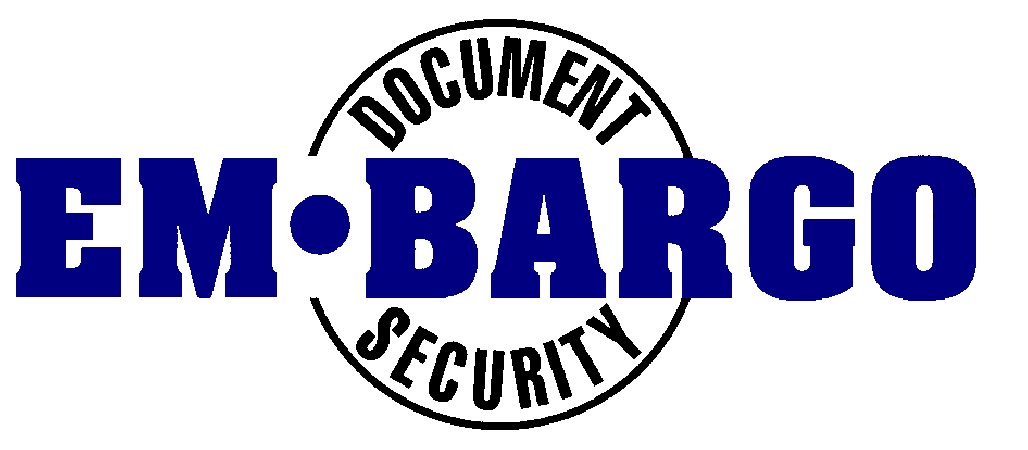

IntroductionRight Hemisphere has developed a software system, called Em-bargo, aimed at protecting copyright of printed documents. It is applicable to word processing software and electronic document delivery. The basic idea, now covered by numerous patents around the world, is that confidential or copyright information can be invisibly marked with a "fingerprint" which links the document to its legitimate owner. Unauthorised copies of the document can be scanned to reveal their source, which provides a significant level of deterrence against security leaks or copyright violation. HOW IT WORKSDocuments are fingerprinted by making a sequence of small variations to the spacing between words, characters, lines or other groups of printed elements of the document. These variations are very small and not visible to the eye, but can be read by a scanner and suitable software. The fingerprint is spread throughout the document, and kept through photocopying or faxing. The fingerprint can only be removed by re-keying the whole document. WORD-PROCESSING APPLICATIONWhen combined with word-processing software, Em-bargo allows each copy of a document to be fingerprinted with the name of the authorised recipient. Any pirate copies can then be traced to their source. The fingerprint can also be arranged to indicate who printed the document. This is valuable for identifying employees who failed to use the shredder, or who sent a job to the wrong printer and didn't retrieve it. Many other applications suggest themselves, such as fingerprinting the document with its filename for later reference, and even applying the technology to photocopiers. INTERNET APPLICATIONEm-bargo has enormous potential in the field of electronic document delivery and network publishing. To purchase a magazine, novel, business report, sheet music, or any other copyright document, the purchaser receives an encrypted file which can only be decrypted and printed by software which fingerprints the document with the purchaser's identity. If the purchaser gives a copy of the document to someone else, either by file transfer or photocopying of the hard copy, the pirate copy bears the purchaser's fingerprint. This capability could be the key to making on-line publishing financially viable. PHOTOCOPIER SECURITYEm-bargo technology can be built into an electronic photocopier (the type of copier which scans the document electronically then prints it). Copies of documents produced by this copier can then contain invisible fingerprint information, such as the name of the person who made the copy. This could be invaluable for controlling document distribution, or preserving copyright in printed documents. This would be a huge benefit in libraries, where copying is allowed so long as numbers are limited, or in businesses where the ability to trace the person responsible for making each copy could be an important security asset. SECURE PRINTERSThe technology can be incorporated into a printer's software, so that, for example, every document printed contains the name of the printer and the date, and possibly the name of the person requesting the printout. Other ApplicationsMany other applications suggest themselves. Here are some examples:
FINGERPRINTINGFingerprinting is achieved by causing the spacing between words, characters, lines or other groups of printed elements to be slightly shortened or increased, according to a special algorithm performed by Em-bargo driver software. Each copy is uniquely fingerprinted without adversely affecting the presentation or readability of the material.This technique has been chosen as it offers a number of benefits:
DECODINGA document's fingerprint is recovered by scanning it, using a conventional flat-bed scanner, and processing the bitmap image using Em-bargo decoding software. The hidden information is then displayed on the screen. |